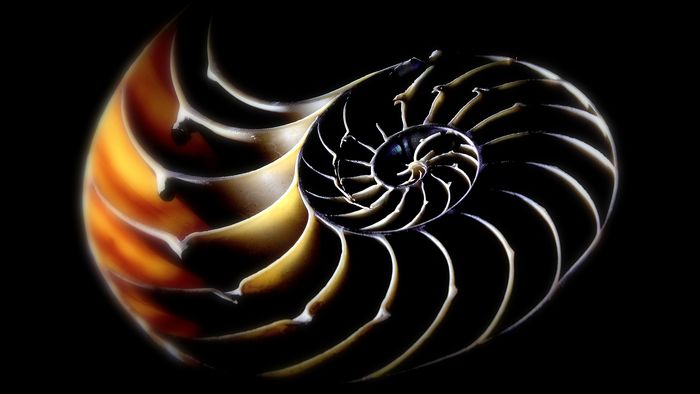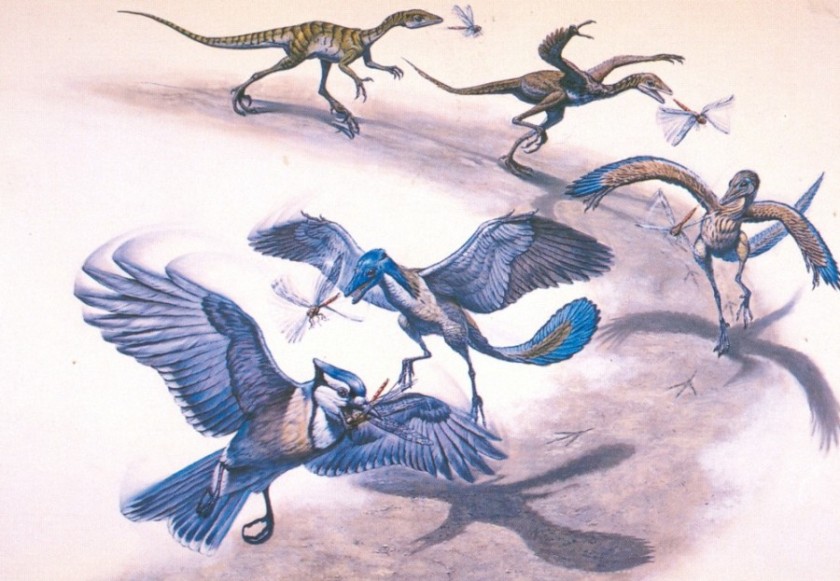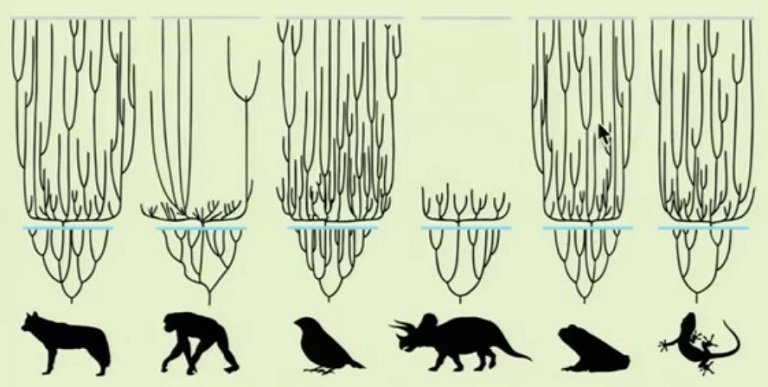
One of the most common criticisms in regards to intelligent design is the opposition that DNA is not information in a sense that originated from an intelligent based cause but rather under naturalistic laws, including that of biochemistry. The exclusion of an intelligent cause over the behavior of biochemistry as being the ultimate explanation for how DNA managed to be sequential and orderly based is a well synthesized argument made by the ID critics. By referring to examples such as sand dunes or to make things even more vividly, the formation of a snowflake, it is insisted that the same process must be true for DNA as well. In a nutshell, given that there are things in nature that appeared to be well orderly structured, it must be too that DNA is nothing more but the same by-product.
The argument pressed by the ID critics exclude that biological information is the result of some intelligent based cause over a purely biochemical cause. The idea of biochemistry or the laws of physics capable of creating such information, sequential order or structure is something that comes from what is known as self-organization. Self-organization is a process where some form of overall order arises out of the local interactions between smaller component parts of an initially disordered system.
So then has the infromation argument for intelligent design been refuted? Not so fast
Problems with the self-organization model:
The main central problem with ID critics conflating DNA information to that of Sand Dunes or of that of a self-organized snowflake is really not that hard to grasp if one paid close attention to the distinct characteristics between that of DNA and those that are self-organized or structured in nature. Self-organizational theorists like to often point to simple geometric shapes or repetitive forms of order like the Sand Dunes arising from or being modified by purely physical or chemical processes. They suggest that such order provides a model for understanding the origin of biological information or body-plan morphogenesis. Self-organizational theorists like love to point out to even that of crystals, vortex, and even convection currents to illustrate the supposed power of physical processes to generate order for free. However, there are flaws with this type of reasoning.
The Flaws Behind Self-Organization:
The first point to consider here is that both DNA & self-organized structures like salt crystals are all chemistry based. They are all made up of atoms that can be expressed in a simple chemical formula. Salt crystals for example are based on the chemical formula as NaCl, that is Sodium Chloride while DNA can be expressed as A,T,C, & G. Now here is where it gets interesting.
If you look closely at not just the molecular structure of a self-organized system, but the behavior, you would notice an interesting observation: there is 1) order of repetitiveness or pattern & 2) geometric and translational symmetry. Salt crystals, for example, which were the first structures determined using X-ray techniques, have a highly repetitive molecular structure of sodium and chlorine atoms arranged in a three-dimensional grid, a pattern in which one type of atom always has six of the other types surrounding it. That is you would find a highly periodic molecular structure of nothing but NaCl, NaCl, NaCl, NaCl, NaCl. Not only does the salt crystal have a highly repetitive pattern, but it also has geometric and translational symmetry, that is the atoms are arranged in a symmetrical fashion on the three dimensional face and also look the same even when moved.
The point here is that it is a well established fact that the self-assembly of crystals and other self-organizing structures that are governed by the pure laws of chemistry are by rule, repetitive, pattern-based, and geometrically symmetrical. The same repetitive and symmetrical molecular structure as observed in salts crystals are as true as the molecular structure and atoms observed in snowflakes. This is well know among those that study the physics of crystallology and in the field of self-assembly chemistry. Here we can finally make an important distinction on what differentiates the information of DNA from natural geometric structures.
Unlike the self-assembly molecular structure of a snowflake, crystal, and other self-organizing systems which are strictly governed by the laws of chemistry, the molecular structure of DNA, more specifically the nucleotides or presence of amino acids of a given functional protein, are actually non-repetitive and sequence specific with respect to function without being based on some certain pattern, following rather an irregular and highly unusual behavior contrary to the ubiquitous laws of self-assembly chemistry. Following the rule that the self-assemblage of inorganic molecular structures formed in nature are periodic and geometrically symmetric, as observed in that of salt crystals and snowflakes, one would therefore expect the arrangement of nucleotides or amino acids from a protein to be highly repetitive and arranged into a similar 3rd dimensional molecular fashion as that of simple geometric shapes formed in nature. Yet, that is not what is observed in DNA, for reasons stated before.
In addition, there are distinguishing characteristics between the information of DNA and those that appeared to be naturally formed by nature. One of the unique things about DNA is that it contains specified complexity. Specified complexity, not to be confused with irreducible complexity, is basically meaningful information that results into a specific communicative effect or function conveyed by the precise or special arrangement of symbols or discrete units. Let’s look at an actual example of specified complexity.
“This message here is specifically complex.”
When it comes to specified complexity, there are unique characteristics involved that only intelligent minds can put into effect. 1) There is no pattern nor repetitiveness involved in determining the overall sentence structure and content of the message. In other words, the precise arrangement of the English alphabet letters that convey meaningful information cannot be predicted mathematically nor expressed by using some certain equation. Patterns by definition are repetitive, whether obvious or subtle, and are therefore predictable to a certain degree. In specified complexity; however, no matter how hard you try, you will not find a distinct regularity or some certain pathway that determines the precise arrangement of the characters or symbols and the words used. In specified complexity, the precise arrangement of characters or symbols, in this case the English alphabet letters, are not necessarily random like of that found in gibberish sentence structure, but rather directed. By contrast, simple geometric figures like salt crystals, snowflakes, spiral galaxies and so on can be determined and predicted mathematically as they are by nature repetitive and follow a certain pattern.
Geometric spirals, for example, formed by nature follow a golden ratio rule that can be expressed and predicted mathematically using the Fibonacci sequence. Even among the laws of physics, there is repetitiveness as the laws only describe repetitive or pattern based phenomena. The distinguishing differences between information produced by a mind are 1) non-repetitive or non-pattern based, 2) unpredictability & 3) special arrangement of characters or symbols that conveys meaningful information.
What does all this have to do with the ID skeptics claim of nature being capable of producing information? Simply this: the law-like, self-organizing processes that generate the kind of order present in a crystal or a vortex do not generate specified information, the kind of non-repetitive and highly sequence specific order present in the genetic code. Laws of nature by definition only involve order in the sense that can be described with differential equations or universal “if-then” statements.
The information bearing sequences in protein coding DNA and RNA molecules do not once again exhibit such repetitive pattern. As such, these sequences can be neither described nor explained by reference to a natural law or law-like self-organizational process. The kind of non-repetitive non-pattern based on display in DNA and RNA, a precise sequential order necessary to ensure function, is not the kind that laws of nature in principle generate or explain. Even among self-organization in biological organisms, they are all based on already pre-existing information, which does not help the case at when explaining the origin of biological information.
So it seems that one of the problems ID critcs face in regards to the claim that information of DNA can be explained by purely chemical means under some self-organization or necessity is denied by the fact that the self-assembly of molecular structures and repetitive order or pattern of sand dunes, vortexes, spiral galaxies, created by nature do not really coincide so well with the biochemical structure and arrangement found in DNA, including the precise arrangement sequencing of nucleotides or amino acids in respect to function and its specific 3rd dimensional protein fold. There is actually no law outside the field of organic chemistry that is able to coincide with the non-repetitive and special arrangement that convey specified information & function as observed in living organisms.
Another point I would like to emphasize is that the laws of biochemistry themselves do not predetermine nor account for the precise arrangement of amino acids nor DNA information. This seems rather self-evident, as it is clear that the laws like gravity themselves are incapable of properly self-tuning into the appropriate conditions for life, without flattening anything on the face of the Earth or throwing them out to space. Until an actual mechanism is observed that coincides with the unique characteristics of DNA being non-repetitive and sequence-specific, there is no reason to presume a biochemical cause, as that has yet to be demonstrated.
Something which the intelligent design skeptics never really bothered to explain in complete detail in regards to what exactly in biochemistry is predetermining or accounting for the specified information or at least the special arrangement in DNA.



